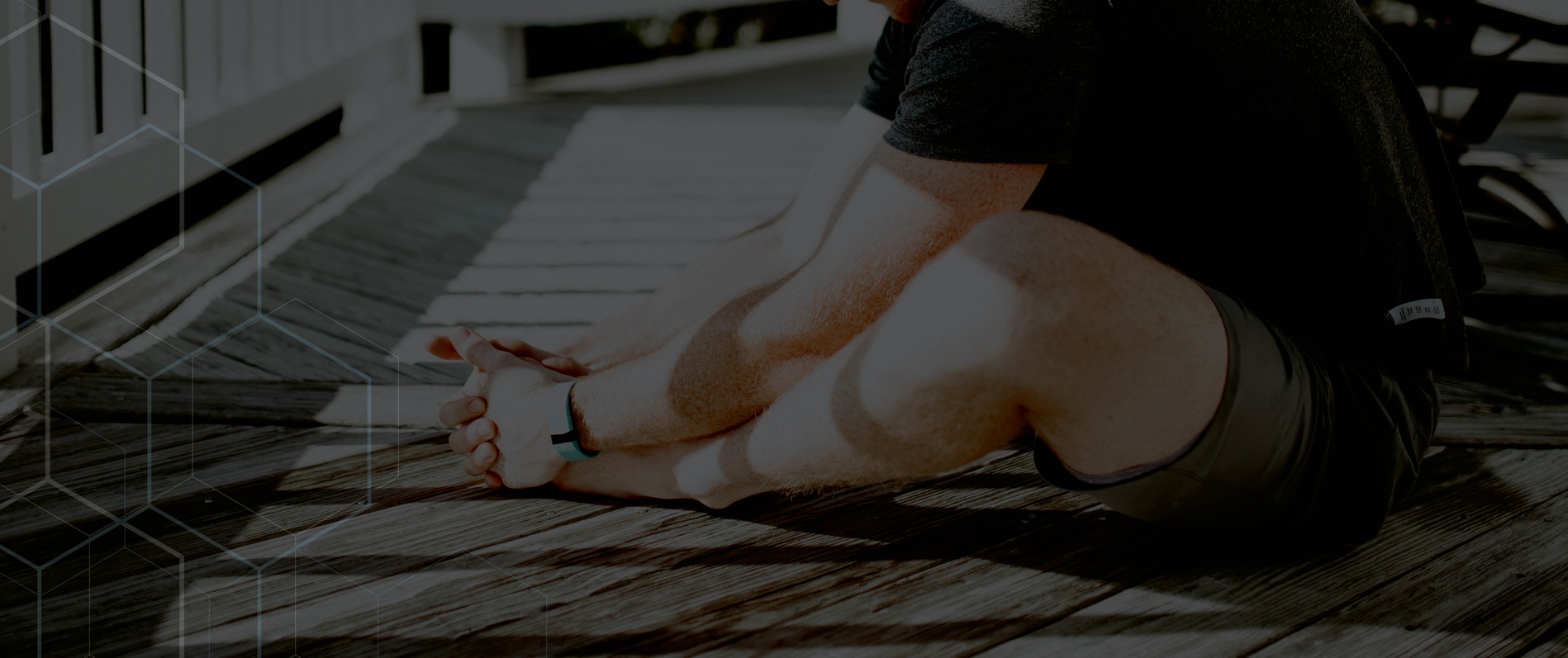
LOW BACK EXERCISES
Session 2
Session #2 begins with Self Myofascial Release series B. First, with the tennis ball, you will roll the calf and Achilles addressing both the outside and inside heads of the calf. Next, you will move up to the gluteus region, cross your leg, and focus on the piriformis. This is often a sensitive spot and will likely need more attention. You will then move up behind the shoulder and locate the infraspinatus, which will be a notch at the base of the joint. You follow that by assuming a standing position near a wall while rolling the ball on the latissimus dorsi from the back of the armpit downward. The wrist extensors and flexors will be addressed next by rolling the top and bottom of the forearm. If you have access to “The Stick” this can be done even more effectively. Your transition to the foam roller begins by rolling the muscles of the hip flexor region and TFL at the top of the front-side of the leg. Seated postures over extended periods of time often make these muscles very tight and short causing low back pain. Next, you will move on to the hamstring and roll the entire back-side of the upper leg at all angles and then move up to the gluteus next. You’ll finish by placing the foam parallel with your spine and rolling out the rhomboids, the muscle between your spine and shoulder blades.
After decreasing tissue density, you will move on to Flexibility series B, the second grouping of flexibility protocols. Once again, areas that were targeted in soft tissue work will be addressed here to lengthen the muscles. First, you will stretch the latissimus dorsi with assistance from a wall. For the standing hamstring, understand that your hamstring attaches at the pelvis, so the goal is to turn your pelvis against the leg that is elevated to get the most substantial stretch. As I mentioned in the soft tissue work, extended time spent in a seated position causes the hip flexors to be tight and short, which ultimately compromises glute activity and hip extension, so people resort to lumbar extension. The half kneeling psoas stretch addresses 1 of the hip flexor muscles specifically. The standing shin grab will help to lengthen the muscles of glute and upper hamstring.
The ankle and thoracic spine mobility drills will carry over from session #1, while you will perform 2 new drills for hip mobility. Instead of hip flexion, which was performed in session #1’s lying psoas march, you will train hip abduction with a side-lying raise in session #2. Internal rotation at the hip will be trained using the windshield wiper movement versus the knee to knee movement of the previous session. The objective is to keep the feet together and separate the feet without compromising your trunk stability to achieve hip internal rotation. Notice that there may be asymmetries between your right and left sides. The goal will be to increase range of motion on both sides to the point where they are similar.
The same 6 activation drills carry over from session #1 to session #2.
Your first strength training movement is an upper body pulling pattern. The cable/band lat pull will be performed from the tall kneeling position to emphasize posture and glute activation. Unlike the low row, this is a vertical pulling movement. Like the low row, your shoulder blades should remain set back and down through the entire movement. The lat pull will be followed by the side-lying external rotation “filler” to enhance thoracic mobility along with good movement through the shoulder. Your hip dominant movement for session #2 is the weighted hip lift, in which you will place your upper body in an elevated position with your feet down. Allow your hips to sag (flex) before driving through your heels and achieving extension, much like the pull-through in session #1. Hip internal rotation is rehearsed in the windshield wiper “filler” that follows. We’ll take the cable/band chest press movement from session #1 and move from a tall kneeling position to a half-kneeling position with 1 knee up and 1 knee down. This creates a little instability and forces the core to activate more in order to stabilize the position. The external rotators will be activated in the wall no money “filler” that follows. And, for your knee dominant push pattern, dumbbells or weights will be added to the stability ball squat for more difficulty. The quad bench bent-knee hip extension will be the “filler” to continue to emphasize hip extension and lumbar stability.
Your session will conclude with Exit Work as you choose 1 or more components of your Prep Work and repeat the process to emphasize clean movements once again.